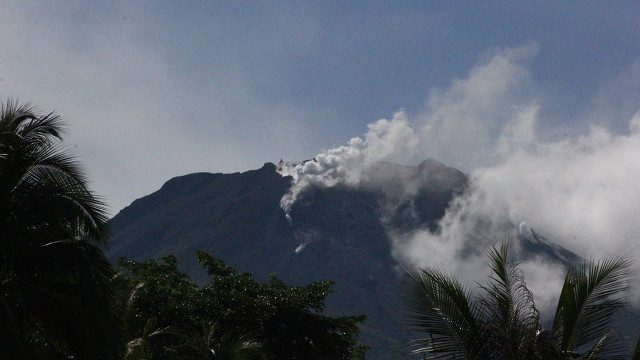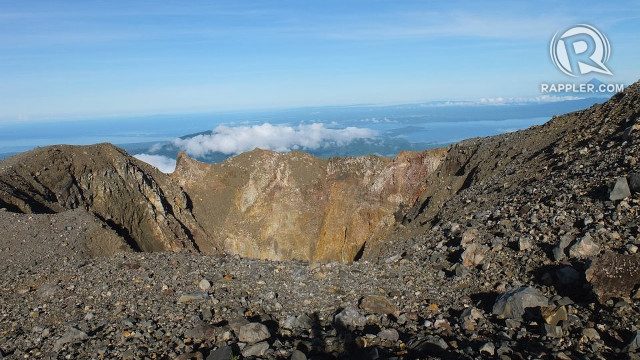SUMMARY
This is AI generated summarization, which may have errors. For context, always refer to the full article.

MANILA, Philippines – The Philippine Institute of Volcanology and Seismology (Phivolcs) has raised the alert level of Mount Bulusan in Sorsogon from 0 to 1, according to a bulletin released at 8 am on Thursday, May 7.
The alert level was heightened after two steam-driven eruptions in one week. The latest happened the night before the new alert level.
“In view of the above activities, Phivolcs is now raising the Alert Level status of Bulusan Volcano from Alert Level 0 to Alert Level 1 (abnormal),” reads the bulletin.
The new alert level indicates that “hydrothermal processes may be underway beneath the volcano that may lead to more steam-driven eruptions.”
Steam-driven eruptions, called “phreatic” eruptions, occur when water makes contact with hot rock inside the volcano causing steam. Due to pressure build-up, the steam escapes through the crater explosively, Phivolcs Director Renato Solidum Jr told Rappler in a previous interview.
Sporadic phreatic eruptions are typical of Bulusan during its restive periods, said Phivolcs-Bicol resident volcanologist Ed Laguerta.
It is “more likely” to erupt again, he said.
“Based on past records, more explosions can be expected to occur with varying intensity, duration and distribution of ash,” reads the bulletin.

Warning to the public
Phivolcs warned that entering Bulusan’s 4-kilometer radius Permanent Danger Zone (PDZ) is strictly prohibited because a phreatic eruption can occur anytime.
Civil aviation authorities should also ensure pilots avoid flying near the volcano’s summit since ash from a phreatic eruption may be dangerous to aircrafts.
Intense rainfall can also complicate matters. The raised alert level comes the day Typhoon “Dodong” entered the Philippine Area of Responsibility (PAR). Its track shows its effects may be felt in the Bicol region.
“When there is significant ash on the slopes, heavy rain can wash the loose debris and trigger lahars,” Solidum told Rappler.
Communities living near rivers and valleys close to the volcano should watch out for such debris and lahar which may reach them through these channels. – Rappler.com
Add a comment
How does this make you feel?
There are no comments yet. Add your comment to start the conversation.